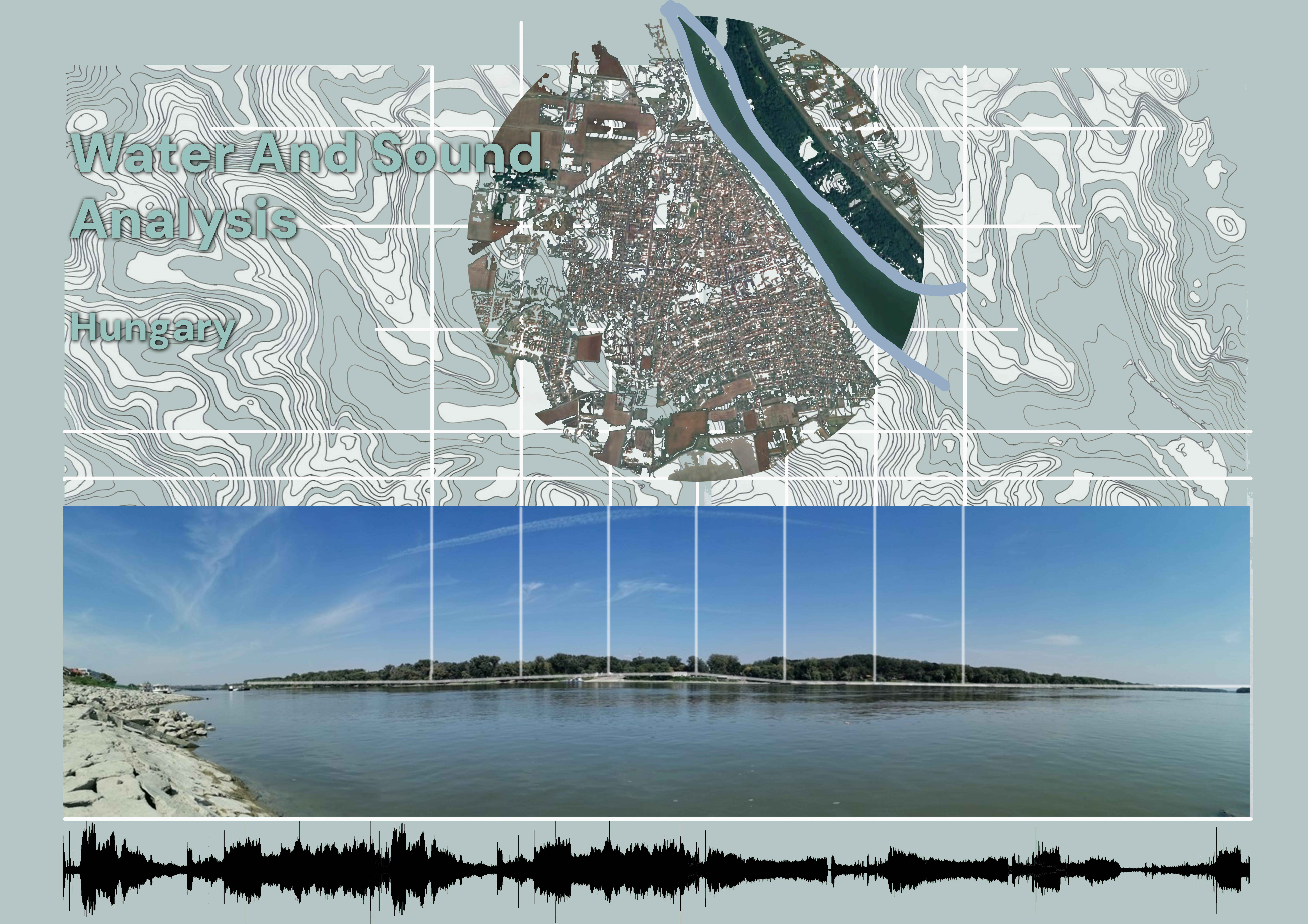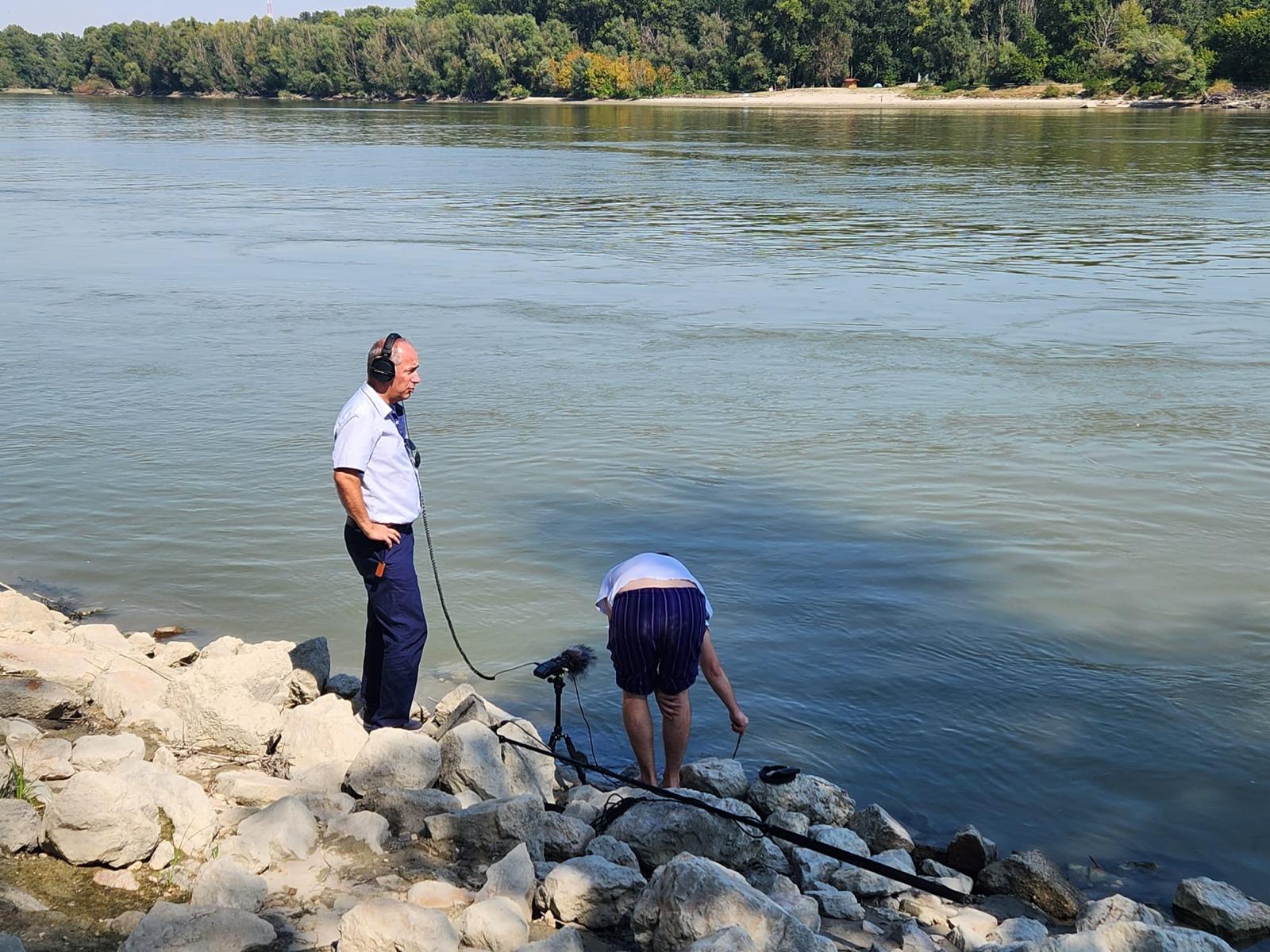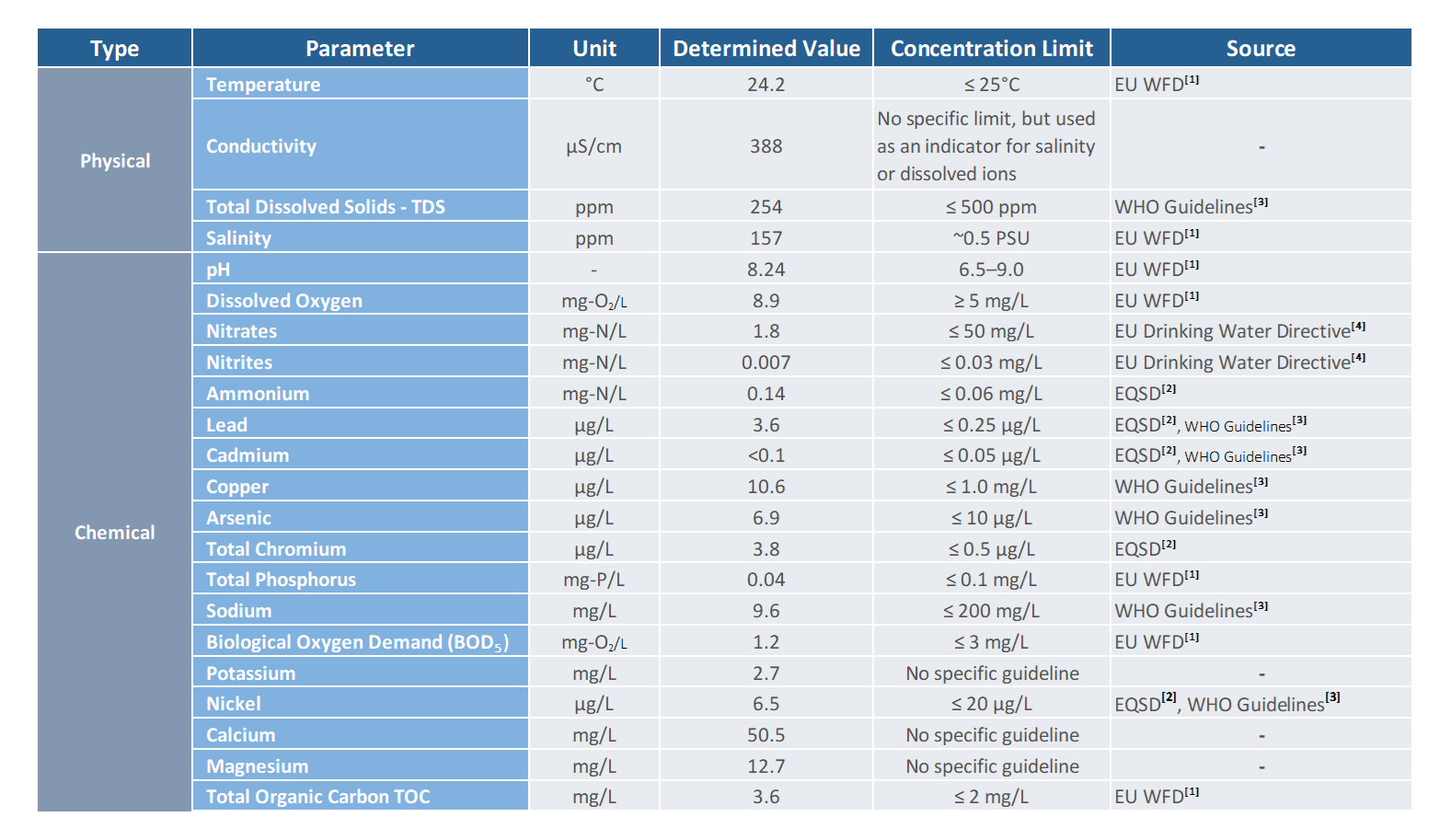Sound and Water Analysis
Ferry Harbor, Mohács, Hungary

Sound Analysis
Date: 04.09.2024
Time: 12.00 pm
Atmospheric Situation
Discover the tranquil beauty of the right shore of the river in Mohács, where nature basks under clear skies. With perfect weather and a peaceful ambiance, this riverside location invites you to relax and recharge:
-
- Bright and Sunny: The sun bathes the landscape in golden light, reflecting beautifully off the gentle ripples of the river.
- Comfortable Warmth: A soothing warmth fills the air, making it an ideal spot to linger and enjoy the scenery.
- Stillness in the Air: With no wind to disturb the moment, the calm surroundings enhance the sense of serenity.
Situation
Near the ferry boat harbor
Ambient sounds
The sound space is mainly affected by the ferry.
Considerations
The sound of the ferry engine, which crosses the river carrying people and cars every 30 min. is quite loud and present, both on the outward and return journeys. It is curious how frequencies increase underwater when the ferry is on the other shore, while they decrease on the surface.

Water Analysis

The water quality of the Danube River in Mohács, at the sampling point Ferry Boat Harbor – P2 reflects a mixture of compliance with the environmental regulations as well as exceedances in certain key parameters, which could indicate localized pollution concerns.
The following parameters are within the acceptable regulatory limits: Temperature (23.7°C), Conductivity (392 µS/cm), Total Dissolved Solids (TDS) (262 ppm), Salinity (160 ppm), pH (8.1), Dissolved Oxygen (8.7 mg-O2/L), Nitrates (2.3 mg-N/L), Nitrites (0.009 mg-N/L), Ammonium (0.13 mg-N/L), Cadmium (<0.1 µg/L), Arsenic (6.4 µg/L), Total Phosphorus (0.06 mg-P/L), Sodium (9.2 mg/L), BOD5 (1.4 mg-O2/L), Potassium (3.0 mg/L), Nickel (5.3 µg/L), Calcium (49.8 mg/L), and Magnesium (13.1 mg/L). These values indicate that the river at this location is generally in good chemical and biological condition, supporting a healthy aquatic environment.
However, certain parameters exceed the regulatory limits, indicating areas of concern for water quality management. Lead (4.2 µg/L) exceeds the allowable concentration of 0.25 µg/L, potentially pointing to contamination from industrial or agricultural sources, which could affect aquatic life. Copper (12.3 µg/L) surpasses the 1.0 mg/L threshold, a potential hazard for sensitive species due to its toxicity. Furthermore, the Total Chromium level (5.4 µg/L) is above the limit of 0.5 µg/L, which may suggest pollution from industrial effluents. Lastly, the Total Organic Carbon (TOC) level (4.2 mg/L) exceeds the acceptable threshold of 2 mg/L, indicating higher organic matter presence that could lead to oxygen depletion and affect the water’s ecological balance if not addressed. These exceedances highlight the need for targeted pollution reduction strategies at this location.
Note: The concentration limits used in the analysis are based on regulatory standards for surface water and drinking water quality, as outlined in the EU Water Framework Directive (EU WFD) and the EU Drinking Water Directive. These limits ensure aquatic ecosystem health and public safety. The EU directives offer broader standards for surface and drinking water across Europe. Different sources were used to ensure comprehensive comparison and accuracy of the values analyzed.
References:
[1] European Commission. (2018). Directive 2000/60/EC of the European Parliament and of the Council establishing a framework for community action in the field of water policy (Water Framework Directive). Official Journal of the European Union, L 327/1. https://eur-lex.europa.eu
[2] European Union. (2008). Directive 2008/105/EC of the European Parliament and of the Council on environmental quality standards in the field of water policy (Environmental Quality Standards Directive). Official Journal of the European Union, L 348/84. https://eur-lex.europa.eu
[3] World Health Organization (WHO). (2017). Guidelines for drinking-water quality: Fourth edition incorporating the first addendum. WHO. https://www.who.int/water_sanitation_health/publications/dwq-guidelines-4th/en/
[4] European Union. (1998). Directive 98/83/EC on the quality of water intended for human consumption. Official Journal of the European Union, L 330, 32-54. https://eur-lex.europa.eu/legal-content/EN/TXT/?uri=CELEX%3A31998L0083
